Coronavirus disease 2019 (COVID-19), a respiratory syndrome caused by SARS-CoV-2, can be transmitted through respiratory droplets and aerosols of droplet nuclei. Aerosol-generating medical procedures (AGMP) are needed to take care of critically ill patients but place health care providers at risk of infection. With limited supplies of personal protective equipment (PPE), barrier systems were developed to help protect health care providers during tracheal intubation. The video intubating stylet shows promise to become the preferred intubation device in conjunction with plastic sheet barriers during the COVID-19 pandemic.
- COVID-19
- endotracheal intubation
- tracheal intubation
- video intubating stylet
- plastic sheet
- barrier
1. Introduction
Since the first case of viral pneumonia was reported from Wuhan, China in late December of 2019, severe acute respiratory syndrome coronavirus 2 (SARS-CoV-2), the causative pathogen for the Coronavirus disease 2019 (COVID-19) pandemic, has run rampant across the world
]. As of 30 September 2021, there have been 232,636,622 confirmed cases and 4,762,089 COVID deaths
]. As cases grew at an alarmingly exponential rate, it was quickly identified that COVID-19 could be transmitted through respiratory droplets and even through the aerosolization of droplet nuclei
]. Because of the pathology and progression of the disease towards respiratory failure, aerosol-generating medical procedures (AGMP) such as laryngoscopy, endotracheal intubation and extubation, tracheostomy, bronchoscopy and bronchoalveolar lavage, positive pressure ventilation, cardiopulmonary resuscitation with bag-valve-mask, suctioning, and nasopharyngeal aspiration and washing would be necessary to take care of patients with COVID-19 infection
2. The Development of Barrier Systems
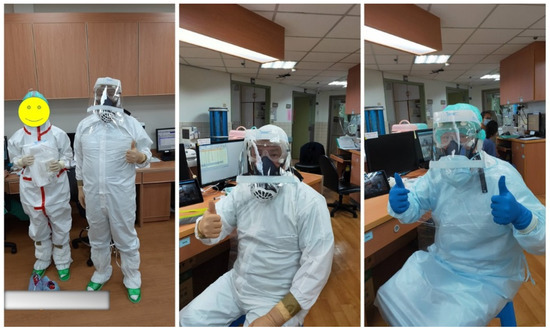
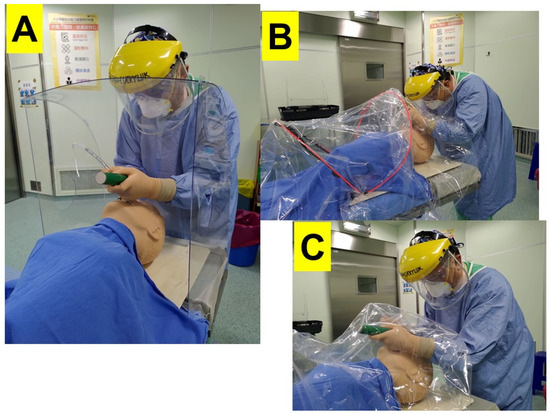
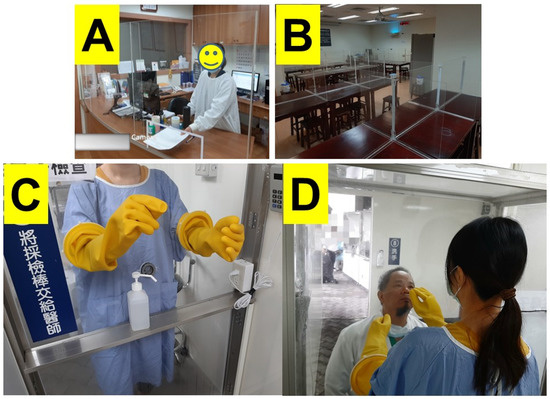
3. Tracheal Intubation during the COVID-19 Pandemic
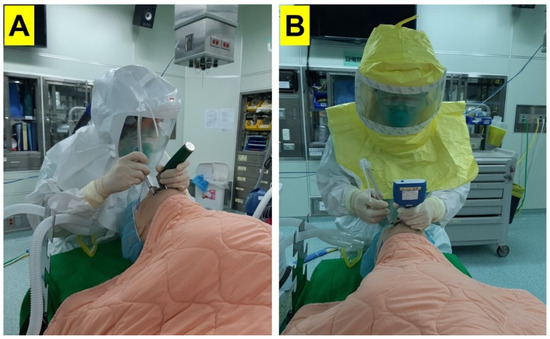
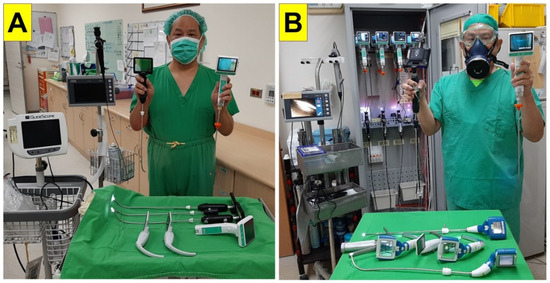
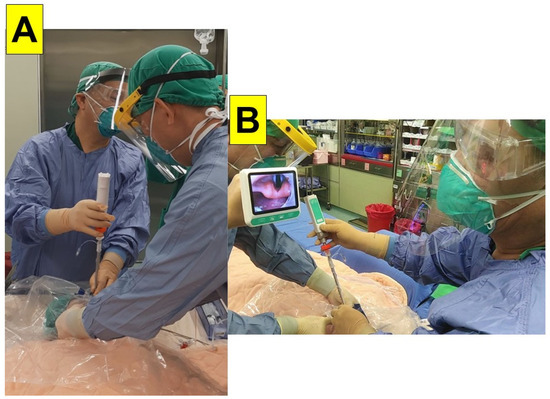
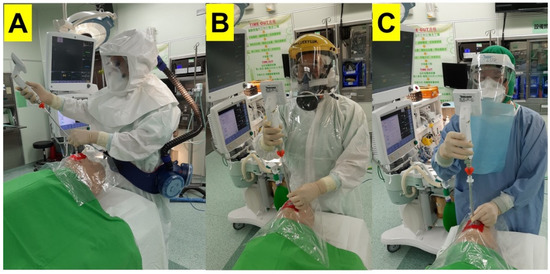
| 2016 | 2017 | 2018 | 2019 | 2020 | |
|---|---|---|---|---|---|
| Anesthesia Number | 16,077 | 17,831 | 17,998 | 19,307 | 19,721 |
| General Anesthesia Number | 15,339 | 16,893 | 17,497 | 18,481 | 19,009 |
| Laryngeal Mask Airway Number | 5544 | 5134 | 5816 | 5902 | 5863 |
| Endotracheal Tube Number | 5953 | 6504 | 6920 | 6966 | 7418 |
| Video Laryngoscope Number | 0 | 0 | 20 | 100 | 635 |
| Video Intubating Stylet Number | 5953 (100%) |
6504 (100%) |
6900 (99.7%) |
6866 (98.6%) |
6783 (91.4%) |
4. Combining Barrier Systems with the Video Intubating Styletd
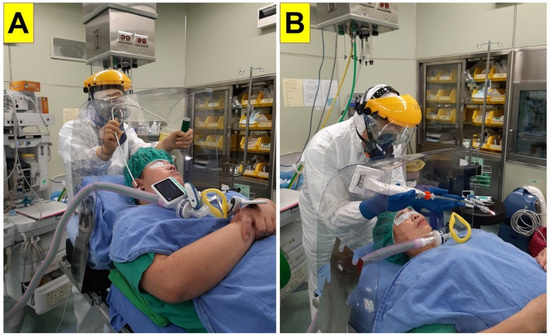
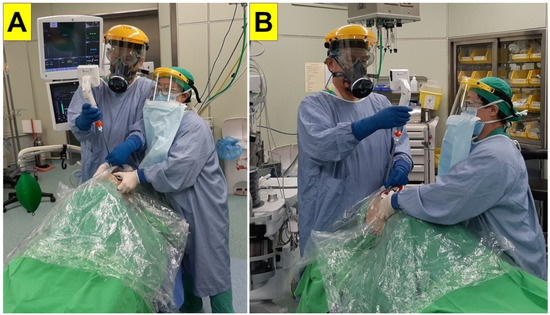
| Plastic Sheet | Intubation Box | |
|---|---|---|
| Size | Small | Bulky |
| Weight | Light | Heavy |
| Texture | Soft and flexible | Hard |
| Space occupied | Small enough | Sizable |
| Need to carry, position, and reposition | Portable | Need two persons to carry and position |
| Set-up time and effort (carrying) | Quick and easy | More time and effort |
| Working location (OR, ICU, ER) | No limitation | Inconvenient at some working environment |
| Combative or claustrophobia patients obese patient | No issue | Could be a serious problem |
| Body habitus (obesity) | No added effects | Could be a serious problem |
| Safety distance (face-to-mouth) between intubator and patient | Safe | Safe |
| Kinesthetic challenges | No | Yes |
| Restriction of arms and hands movement (intubator’s and assistant’s) | Not at all | Yes |
| Maneuverability and dexterity | Not an issue | Could be hindered |
| Cause damage on PPE | Not an issue | Yes |
| Visibility and glaring | Transparent and clear | Could be affected |
| Intubation difficulties: Time to intubate/attempts/total duration/need assistance/failure | Not affected | Could be worse and risky |
| Difficulty manipulating airway tools (inserting laryngoscope, tube negotiation, confirmation, removal of stylet) | Not affected | Could be worse and risk |
| Airway visualization—Cormack Lehane score | Not affected | Could be worse |
| Timing tolerance of hypoxemia and hypotension | Acceptable | Low tolerance |
| Removal if difficult airway emergency occurred | Easy | Take time |
| Interference on airway manipulation | Not a problem | Could be affected |
| Intubating tools selection | No limits | Video laryngoscope and bougie |
| Cause more contamination during retrieval of the barrier | Insignificant | Potential problem |
| Need experience and more training | Not a problem | Needed |
| Learning curve | High | Could be a problem |
| Disposable | Yes | Not always |
| Workload on removal and discard and disinfection | Minimal | Annoying and difficult |
| Accessible and available | Yes | Not always be |
| Affordable | Yes | Not always be |
| False sense of security | Mild | Strong |
| Subjective feeling of difficulty on intubation | Insignificant | Notable |
| Mental load | Minimal | Significant |
| Effectiveness of aerosol prevention | Only for droplets prevention | Questionable for aerosol prevention |
| Safety issues on the patients | Minimal | Might cause serious problems |
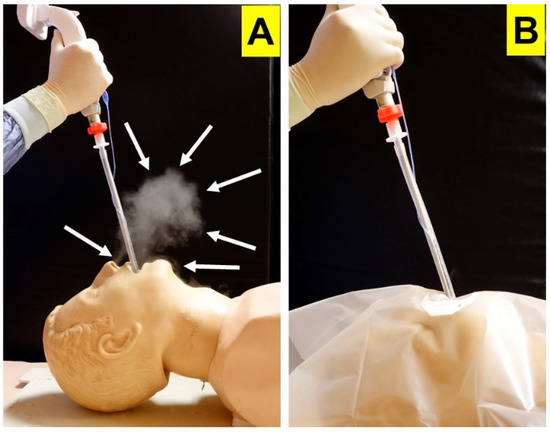
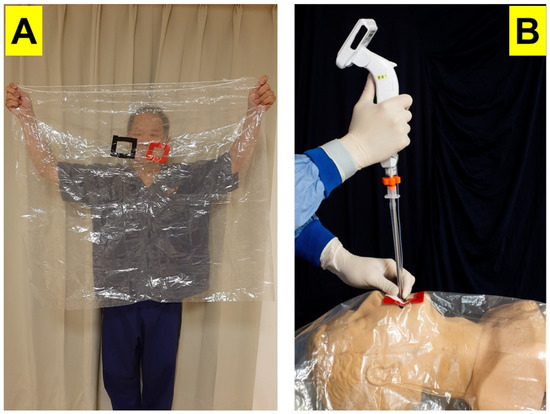
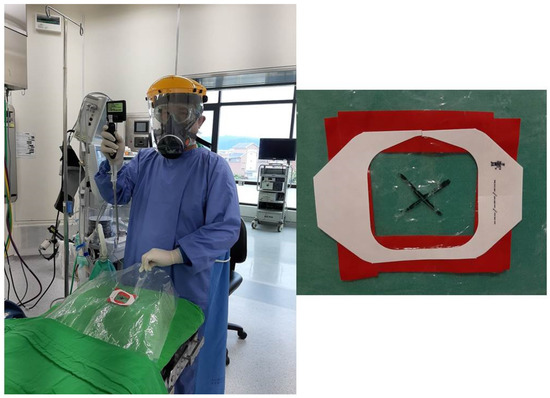
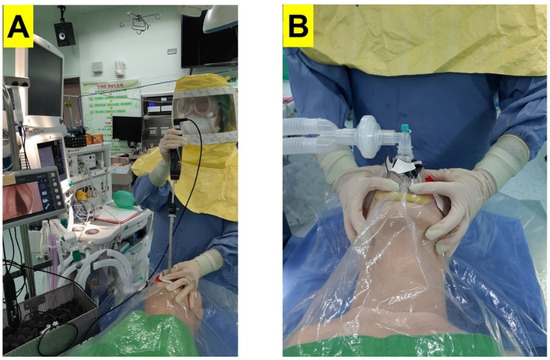
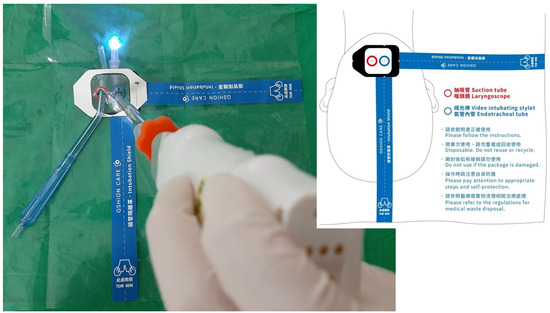
5. Criticisms of Barrier Methods
6. Future Directions and Conclusions
]. Healthcare providers in the fields of anesthesiology, critical care medicine, emergency medicine, and otolaryngology, because of their roles in performing AGMPs for these patients, found themselves at risk of infection
References
- Huang, C.; Wang, Y.; Li, X.; Ren, L.; Zhao, J.; Hu, Y.; Zhang, L.; Fan, G.; Xu, J.; Gu, X.; et al. Clinical features of patients infected with 2019 novel coronavirus in Wuhan, China. Lancet 2020, 395, 497–506.
- Data: WHO Coronavirus (COVID-19) Dashboard. Available online: https://covid19.who.int (accessed on 30 September 2021).
- Yuki, K.; Fujiogi, M.; Koutsogiannaki, S. COVID-19 pathophysiology: A review. Clin. Immunol. 2020, 215, 108427.
- Hu, B.; Guo, H.; Zhou, P.; Shi, Z.L. Characteristics of SARS-CoV-2 and COVID-19. Nat. Rev. Microbiol. 2021, 19, 141–154.
- Wax, R.S.; Christian, M.D. Practical recommendations for critical care and anesthesiology teams caring for novel coronavirus (2019-nCoV) patients. Can. J. Anaesth. 2020, 67, 568–576.
- Ruskin, K.J.; Ruskin, A.C.; Musselman, B.T.; Harvey, J.R.; Nesthus, T.E.; O’Connor, M. COVID-19, personal protective equipment, and human performance. Anesthesiology 2021, 134, 518–525.
- Verbeek, J.H.; Rajamaki, B.; Ijaz, S.; Sauni, R.; Toomey, E.; Blackwood, B.; Tikka, C.; Ruotsalainen, J.H.; Kilinc Balci, F.S. Personal protective equipment for preventing highly infectious diseases due to exposure to contaminated body fluids in healthcare staff. Cochrane Database Syst. Rev. 2020, 5, CD011621.
- Burki, T. Global shortage of personal protective equipment. Lancet Infect. Dis. 2020, 20, 785–786.
- Arnaout, R. Cooperation under pressure: Lessons from the COVID-19 swab crisis. J. Clin. Microbiol. 2021, 59, JCM0123921.
- Lai, J.; Ma, S.; Wang, Y.; Cai, Z.; Hu, J.; Wei, N.; Wu, J.; Du, H.; Chen, T.; Li, R.; et al. Factors associated with mental health outcomes among health care workers exposed to coronavirus disease 2019. JAMA Netw. Open 2020, 3, e203976.
- Tregoning, J.S.; Flight, K.E.; Higham, S.L.; Wang, Z.; Pierce, B.F. Progress of the COVID-19 vaccine effort: Viruses, vaccines and variants versus efficacy, effectiveness and escape. Nat. Rev. Immunol. 2021, 21, 626–636.
- Everington, K. Taiwanese Doctor Invents Device to Protect US Doctors against Coronavirus. 23 March 2020. Available online: https://www.taiwannews.com.tw/en/news/3902435 (accessed on 20 August 2021).
- Lai, H.Y. Aerosol Box Protects Healthcare Providers during Endotracheal Intubation. Available online: https://sites.google.com/view/aerosolbox/home?authuser=0 (accessed on 20 August 2021).
- Canelli, R.; Connor, C.W.; Gonzalez, M.; Nozari, A.; Ortega, R. Barrier enclosure during endotracheal intubation. N. Engl. J. Med. 2020, 382, 1957–1958.
- Fidler, R.L.; Niedek, C.R.; Teng, J.J.; Sturgeon, M.E.; Zhang, Q.; Robinowitz, D.L.; Hirsch, J. Aerosol retention characteristics of barrier devices. Anesthesiology 2021, 134, 61–71.
- Fried, E.A.; Zhou, G.; Shah, R.; Shin, D.W.; Shah, A.; Katz, D.; Burnett, G.W. Barrier devices, intubation, and aerosol mitigation strategies: Personal protective equipment in the time of Coronavirus Disease 2019. Anesth. Analg. 2021, 132, 38–45.
- Babazade, R.; Khan, E.S.; Ibrahim, M.; Simon, M.; Vadhera, R.B. Additional barrier to protect health care workers during intubation. Anesth. Analg. 2020, 131, e47–e48.
- Brown, H.; Preston, D.; Bhoja, R. Thinking outside the box: A low-cost and pragmatic alternative to aerosol boxes for endotracheal intubation of COVID-19 patients. Anesthesiology 2020, 133, 683–684.
- Brown, S.; Patrao, F.; Verma, S.; Lean, A.; Flack, S.; Polaner, D. Barrier system for airway management of COVID-19 patients. Anesth. Analg. 2020, 131, e34–e35.
- Emami, N.; Tanner, T.; Ogundipe, F.; Hawn, V.S.; Rubin, R.; Skae, C.C.; Shiloh, A.L.; Keene, A.B. Drape to prevent disease transmission during endotracheal intubation. Am. J. Infect. Control 2021, 49, 387–388.
- Price, C.; Ben-Yakov, M.; Choi, J.; Orchanian-Cheff, A.; Tawadrous, D. Barrier enclosure use during aerosol-generating medical procedures: A scoping review. Am. J. Emerg. Med. 2021, 41, 209–218.
- U.S. Food & Drug Administration. Emergency Use Authorization for Protective Barrier Enclosures in Response to the Evolving Coronavirus Disease 2019 (COVID-19) Pandemic. 1 May 2020. Available online: https://www.fda.gov/media/141415/download (accessed on 19 August 2020).
- Rosenblatt, W.H.; Sherman, J.D. More on barrier enclosure during endotracheal intubation. N. Engl. J. Med. 2020, 382, e69.
- Kovatsis, P.G.; Matava, C.T.; Payton, J.M. More on barrier enclosure during endotracheal intubation. N. Engl. J. Med. 2020, 382, e69.
- Duggan, L.V.; Marshall, S.D.; Scott, J.; Brindley, P.G.; Grocott, H.P. The MacGyver bias and attraction of homemade devices in healthcare. Can. J. Anaesth. 2019, 66, 757–761.
- Brewster, D.J.; Begley, J.L.; Marshall, S.D. Rise and fall of the aerosol box; and what we must learn from the adoption of untested equipment. Emerg. Med. J. 2021, 38, 109–110.
- Turner, M.C.; Duggan, L.V.; Glezerson, B.A.; Marshall, S.D. Thinking outside the (acrylic) box: A framework for the local use of custom-made medical devices. Anaesthesia 2020, 75, 1566–1569.
- Berry, J.M. Conventional (laryngoscopic) orotracheal and nasotracheal intubation (single lumen tube). In Benumof’s Airway Management: Principles and Practice, 2nd ed.; Benumof, J.L., Ed.; Mosby-Elsevier: Philadelphia, PA, USA, 2007; Chapter 16; pp. 379–392.
- Kabrhel, C.; Thomsen, T.W.; Setnik, G.S.; Walls, R.M. Videos in clinical medicine. Orotracheal intubation. N. Engl. J. Med. 2007, 356, e15.
- Cook, T.M.; El-Boghdadly, K.; McGuire, B.; McNarry, A.F.; Patel, A.; Higgs, A. Consensus guidelines for managing the airway in patients with COVID-19: Guidelines from the Difficult Airway Society, the Association of Anaesthetists, the Intensive Care Society, the Faculty of Intensive Care Medicine and the Royal College of Anaesthetists. Anaesthesia 2020, 75, 785–799.
- Brewster, D.J.; Chrimes, N.; Do, T.B.; Fraser, K.; Groombridge, C.J.; Higgs, A.; Humar, M.J.; Leeuwenburg, T.J.; McGloughlin, S.; Newman, F.G.; et al. Consensus statement: Safe Airway Society principles of airway management and tracheal intubation specific to the COVID-19 adult patient group. Med. J. Aust. 2020, 212, 472–481.
- Lewis, S.R.; Butler, A.R.; Parker, J.; Cook, T.M.; Smith, A.F. Videolaryngoscopy versus direct laryngoscopy for adult patients requiring tracheal intubation. Cochrane Database Syst. Rev. 2016, 11, CD011136.
- Shikani, A.H. New “seeing” stylet-scope and method for the management of the difficult airway. Otolaryngol. Head Neck Surg. 1999, 120, 113–116.
- Lee, M.C.; Tseng, K.Y.; Shen, Y.C. Nasotracheal intubation in patients with limited mouth opening: A comparison between fibreoptic intubation and the Trachway®. Anaesthesia 2016, 71, 31–38.
- Yang, M.; Kim, J.A.; Ahn, H.J.; Choi, J.W.; Kim, D.K.; Cho, E.A. Double-lumen tube tracheal intubation using a rigid video-stylet: A randomized controlled comparison with the Macintosh laryngoscope. Br. J. Anaesth. 2013, 111, 990–995.
- Yoon, H.K.; Lee, H.C.; Park, J.B.; Oh, H.; Hee-Pyoung Park, H.P. McGrath MAC videolaryngoscope versus Optiscope video stylet for tracheal intubation in patients with manual inline cervical stabilization: A randomized trial. Anesth. Analg. 2020, 130, 870–878.
- Kim, J.K.; Kim, J.A.; Kim, C.S.; Ahn, H.J.; Yang, M.K.; Choi, S.J. Comparison of tracheal intubation with the Airway Scope or Clarus Video System in patients with cervical collars. Anaesthesia 2011, 66, 694–698.
- Yang, Y.L.; Huang, C.H.; Luk, H.N.; Tsai, P.B. Adaptation to the plastic barrier sheet to facilitate intubation during the COVID-19 pandemic. Anesth. Analg. 2020, 131, e97–e99.
- Luk, H.N.; Yang, Y.L.; Tsai, P.B. Application of plastic sheet barrier and video intubating stylet to protect tracheal intubators during coronavirus disease 2019 pandemic: A Taiwan experience. Cell Transplant. 2021, 30.
- Tsai, P.B.; Luk, H.N. Plastic sheet and video intubating stylet: A technical note. Asian J. Anesthesiol. 2021, 1–5.
- Matava, C.T.; Yu, J.; Denning, S. Clear plastic drapes may be effective at limiting aerosolization and droplet spray during extubation: Implications for COVID-19. Can J Anaesth. 2020, 67, 902–904.
- Rose, P.; Veall, J.; Chima, N.; Vowels, E.; Chitnis, S.; Flexman, A.; Tang, R. A comparison of droplet and contact contamination using 3 simulated barrier techniques for COVID-19 intubation: A quality assurance study. CMAJ Open 2020, 8, E554–E559.
- Begley, J.L.; Lavery, K.E.; Nickson, C.P.; Brewster, D.J. The aerosol box for intubation in coronavirus disease 2019 patients: An in-situ simulation crossover study. Anaesthesia 2020, 75, 1014–1021.
- Jen, T.T.H.; Gusti, V.; Badh, C.; Mehta, S.; Denomme, J.; Lockhart, S.; Shams, B.; Klaibert, B.; Chau, A. The impact of a barrier enclosure on time to tracheal intubation: A randomized controlled trial. Can. J. Anaesth. 2021, 68, 1358–1367.
- Lim, Z.J.; Ponnapa Reddy, M.; Karalapillai, D.; Shekar, K.; Subramaniam, A. Impact of an aerosol box on time to tracheal intubation: Systematic review and meta-analysis. Br. J. Anaesth. 2021, 126, e122–e125.
- Sorbello, M.; Rosenblatt, W.; Hofmeyr, R.; Greif, R.; Urdaneta, F. Aerosol boxes and barrier enclosures for airway management in COVID-19 patients: A scoping review and narrative synthesis. Br. J. Anaesth. 2020, 125, 880–894.
- Simpson, J.P.; Wong, D.N.; Verco, L.; Carter, R.; Dzidowski, M.; Chan, P.Y. Measurement of airborne particle exposure during simulated tracheal intubation using various proposed aerosol containment devices during the COVID-19 pandemic. Anaesthesia 2020, 75, 1587–1595.
- U.S. Food & Drug Administration. Protective Barrier Enclosures without Negative Pressure Used during the COVID-19 Pandemic May Increase Risk to Patients and Health Care Providers—Letter to Health Care Providers. 20 August 2020. Available online: https://www.fda.gov/medical-devices/letters-health-care-providers/protective-barrier-enclosures-without-negative-pressure-used-during-covid-19-pandemic-may-increase (accessed on 20 August 2021).
- Ong, J.; Lee, C.L.; Huang, S.J.; Shyr, M.H. Comparison between the Trachway video intubating stylet and Macintosh laryngoscope in four simulated difficult tracheal intubations: A manikin study. Tzu Chi Med. J. 2016, 28, 109–112.
- Wu, M.Y.; Yiang, G.T.; Ke, J.Y.; Chen, C.S.; Lin, P.C.; Chen, Y.L. Role of Trachway versus conventional modes of intubation in difficult airway management in COVID-19 setups. Emerg. Med. Int. 2021, 25, 6614523.
- Wahdan, A.S.; El-Refai, N.A.R.; Omar, S.H.; Abdel Moneem, S.A.; Mohamed, M.M.; Hussien, M.M. Endotracheal intubation in patients undergoing open abdominal surgery in the lateral position: A comparison between the intubating video stylet and fiberoptic intubating bronchoscopy. Korean J. Anesthesiol. 2021, 74, 234–241.
- Lundstrøm, L.H.; Møller, A.M.; Rosenstock, C.; Astrup, G.; Wetterslev, J. High body mass index is a weak predictor for difficult and failed tracheal intubation: A cohort study of 91,332 consecutive patients scheduled for direct laryngoscopy registered in the Danish Anesthesia Database. Anesthesiology 2009, 110, 266–274.
- Popkin, B.M.; Du, S.; Green, W.D.; Beck, M.A.; Algaith, T.; Herbst, C.H.; Alsukait, R.F.; Alluhidan, M.; Alazemi, N.; Shekar, M. Individuals with obesity and COVID-19: A global perspective on the epidemiology and biological relationships. Obes. Rev. 2020, 21, e13128.
- Drucker, D.J. Diabetes, obesity, metabolism, and SARS-CoV-2 infection: The end of the beginning. Cell Metab. 2021, 33, 479–498.
- Cook, T.M.; Kelly, F.E. A national survey of videolaryngoscopy in the United Kingdom. Br. J. Anaesth. 2017, 118, 593–600.
- Swaminathan, A.K.; Rachel Berkowitz, R.; Baker, A.; Spyres, M. Do emergency medicine residents receive appropriate video laryngoscopy training? A survey to compare the utilization of video laryngoscopy devices in emergency medicine residency programs and community emergency departments. J. Emerg. Med. 2015, 48, 613–619.
- Monette, D.L.; Brown III, C.A.; Benoit, J.L.; McMullan, J.T.; Carleton, S.C.; Steuerwald, M.T.; Eyre, A.; Pallin, D.J.; NEAR III Investigators. The impact of video laryngoscopy on the clinical learning environment of emergency medicine residents: A report of 14,313 intubations. AEM. Educ. Train. 2019, 3, 156–162.
- Ono, Y.; Tanigawa, K.; Shinohara, K.; Yano, T.; Sorimachi, K.; Inokuchi, R.; Shimada, J. Human and equipment resources for difficult airway management, airway education programs, and capnometry use in Japanese emergency departments: A nationwide cross-sectional study. Int. J. Emerg. Med. 2017, 10, 28.
- Liu, H.H.; Wang, Y.; Zhong, M.; Li, Y.H.; Gao, H.; Zhang, J.F.; Ma, W.H. Managing the difficult airway: A survey of doctors with different seniority in China. Medicine 2021, 100, e27181.
- Levitan, R.M. Design rationale and intended use of a short optical stylet for routine fiberoptic augmentation of emergency laryngoscopy. Am. J. Emerg. Med. 2006, 24, 490–495.
- Biro, P.; Bättig, U.; Henderson, J.; Seifert, B. First clinical experience of tracheal intubation with the SensaScope, a novel steerable semirigid video stylet. Br. J. Anaesth. 2006, 97, 255–261.
- Phua, D.S.; Mah, C.L.; Wang, C.F. The Shikani optical stylet as an alternative to the GlideScope® videolaryngoscope in simulated difficult intubations—A randomised controlled trial. Anaesthesia 2012, 67, 402–406.
- Cooney, D.R.; Cooney, N.L.; Wallus, H.; Wojcik, S. Performance of emergency physicians utilizing a video-assisted semi-rigid fiberoptic stylet for intubation of a difficult airway in a high-fidelity simulated patient: A pilot study. Int. J. Emerg. Med. 2012, 5, 24.
- Kok, T.; George, R.B.; McKeen, D.; Vakharia, N.; Pink, A. Effectiveness and safety of the Levitan FPS Scope™ for tracheal intubation under general anesthesia with a simulated difficult airway. Can. J. Anaesth. 2012, 59, 743–750.
- Gaszynski, T.; Pietrzyk, M.; Szewczyk, T.; Gaszynska, E. A comparison of performance of endotracheal intubation using the Levitan FPS optical stylet or Lary-Flex videolaryngoscope in morbidly obese patients. Sci. World J. 2014, 207591.
- Xu, M.; Li, X.X.; Guo, X.Y.; Wang, J. Shikani optical stylet versus Macintosh laryngoscope for intubation in patients undergoing surgery for cervical spondylosis: A randomized controlled trial. Chin. Med. J. 2017, 130, 297–302.
- Evans, A.; Morris, S.; Petterson, J.; Hall, J.E. A comparison of the Seeing Optical Stylet and the gum elastic bougie in simulated difficult tracheal intubation: A manikin study. Anaesthesia 2006, 61, 478–481.
- Driver, B.; Dodd, K.; Klein, L.R.; Buckley, R.; Robinson, A.; McGill, J.W.; Reardon, R.F.; Prekker, M.E. The bougie and first-pass success in the emergency department. Ann. Emerg. Med. 2017, 70, 473–478.
- Ono, Y.; Shinohara, K.; Shimada, J.; Inoue, S.; Kotani, J. Lower maximum forces on oral structures when using gum-elastic bougie than when using endotracheal tube and stylet during both direct and indirect laryngoscopy by novices: A crossover study using a high-fidelity simulator. BMC Emerg. Med. 2020, 20, 34.
- Driver, B.E.; Prekker, M.E.; Klein, L.R.; Reardon, R.F.; Miner, J.R.; Fagerstrom, E.T.; Cleghorn, M.R.; McGill, J.W.; Cole, J.B. Effect of use of a bougie vs endotracheal tube and stylet on first-attempt intubation success among patients with difficult airways undergoing emergency intubation: A randomized clinical trial. JAMA 2018, 319, 2179–2189.
- Combes, X.; Jabre, P.; Margenet, A.; Merle, J.C.; Leroux, B.; Dru, M.; Lecarpentier, E.; Dhonneur, G. Unanticipated difficult airway management in the prehospital emergency setting: Prospective validation of an algorithm. Anesthesiology 2011, 114, 105–110.
